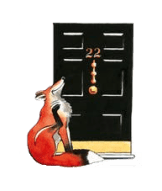At school in the 1970s, several of us were ardent fans of the Barry McKenzie strip in Private Eye. Barry, an uncouth Australian who arrives for adventures in Britain, was our role model. We even went on a special pilgrimage to a Hampstead pub which – uniquely, we thought – stocked Foster’s, Barry’s favourite ‘ice-cold tubes’. By the time I became editor of this paper in 1984, the strip had long ceased. It was my ambition to recreate it in The Spectator’s pages, in the harsher climate of Thatcher’s Britain, with an older but not, I hoped, wiser Barry, still trying and failing to ‘feature’ (defined in the McKenzie Australian glossary as ‘feature, see under naughty’) with girls. Nick Garland, who drew the original masterwork, was already available, drawing our brilliant covers. He willingly assisted my courtship of his co-author, Barry Humphries (who died last week). Barry was charming. Several discussions ensued and we became friends. But it was not to be: Barry McKenzie had been left behind by Edna Everage, who by that time had risen to the rank of Dame. Barry Humphries liked to explain that he could not control her. Nick once taxed him with the unkind things Edna had said in an interview about her producer, Michael White. ‘I know,’ Barry said, ‘I heard it. It wasn’t me. It was her.’ My wife once asked Barry how he chose which members of the audience Edna would fasten on to persecute. ‘Oh,’ he said, forgetting for a moment Edna’s separate existence, ‘I always go for the shy ones.’ He was lethal.
The genesis of the Barry McKenzie strip is interesting. The young Garland, trying to make a living by drawing, was struggling to create a comic strip. He brought the problem to Peter Cook, whom he knew through the Establishment Club, which he had managed. Cook’s fertile mind suggested a coarse young Australian male visiting England as the strip’s protagonist. Garland asked Cook, who was involved in Private Eye, to write the words. ‘I can’t,’ said Cook, ‘but I know the man who can.’ Garland and Barry Humphries were soon collaborating, each paid £13 a fortnight by the Eye. The anti-hero was named Barry after his co-creator and McKenzie after the Aussie cricketer Garth McKenzie. His jaw was modelled by Nick on that of Desperate Dan. Barry was always late with copy, often blaming ‘a freak gust of wind’ which had blown his work out of the window. The strip ran from 1964 to 1972, when the editor, Richard Ingrams, spiked, on grounds of taste, an episode involving, I think, Barry’s employment with a lesbian dental assistant and the administration of anaesthetic for unprofessional reasons. The strip was adapted to the screen in two films which fell below the level of the original.
In a memorable strip episode, Barry appears on the psychoanalyst’s couch. The therapist (who looks suspiciously like Humphries) asks him: ‘What exactly is your relationship with your mother?’ ‘I’m her son!’ Barry stoutly declares. His relationship with Edna Everage is more obscure. According to Garland, she was originally Barry’s aunt and not the housewife superstar she later became (the Everage, of course, being the Australian pronunciation of ‘average’). Edna does indeed feature, in the conventional sense of the word, in the first McKenzie film. But the strange thing is that I cannot find her in the strip. I have studied the Complete Barry McKenzie book, published in 1988 and dedicated to Peter Cook, its miglior fabbro. This is no easy task because the drawings teem and the long captions are in tiny print. I cannot find her and nor, as we go to print, can Nick. What is the answer?
This is an extract from Charles Moore’s Notes, which appears in this week’s issue of The Spectator, out tomorrow.







Comments